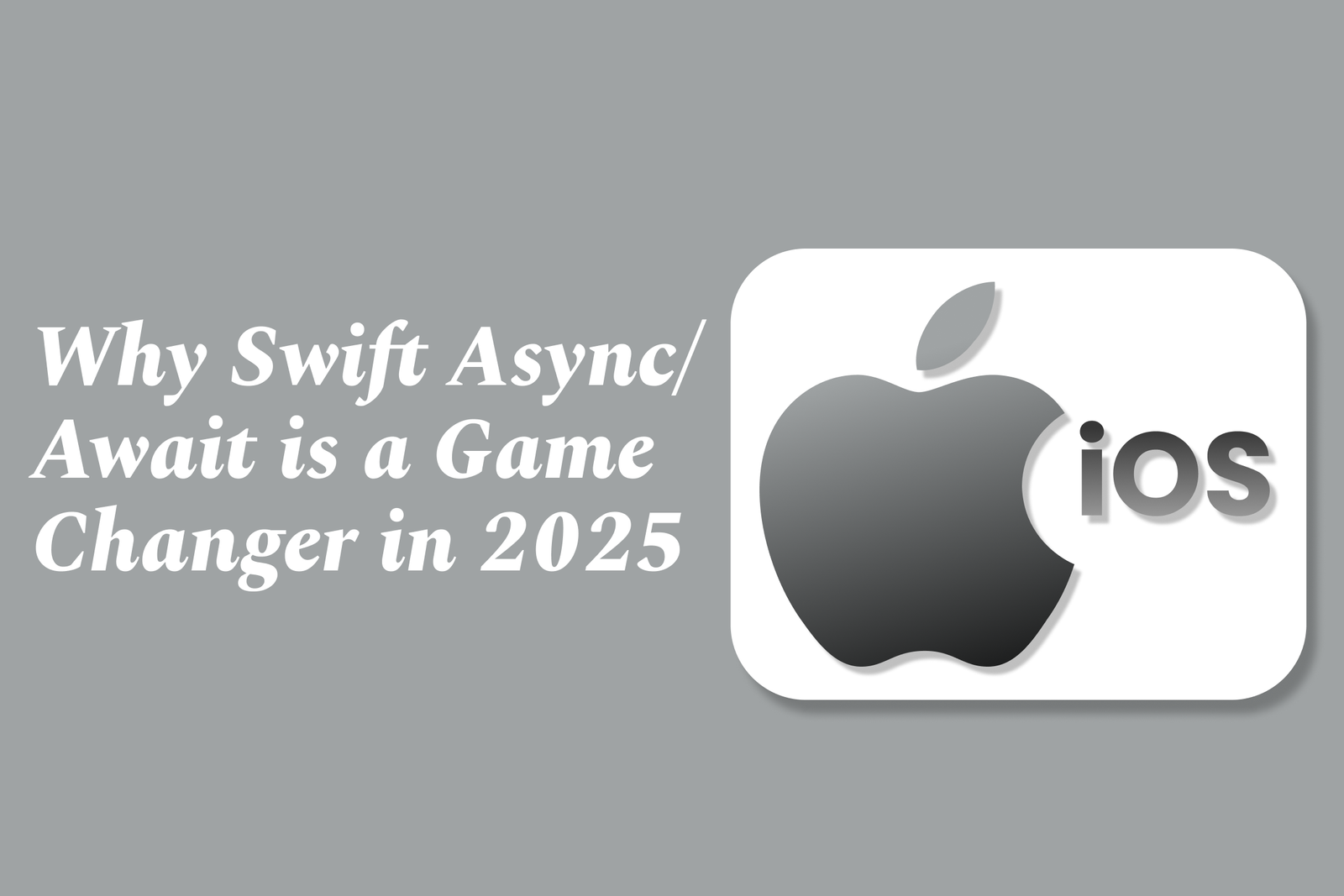Why Swift Async/Await Is a Game Changer in 2025
Swift’s async/await in 2025 revolutionizes asynchronous coding by simplifying complex callbacks into clear, readable syntax. It boosts performance with structured concurrency, reduces boilerplate, and enhances error handling—making Swift development faster, safer, and more efficient.
Why Swift Async/Await is a Game Changer in 2025
1 ) Introduction to Swift Async/Await
Swift's async/await feature simplifies asynchronous programming by allowing developers to write asynchronous code in a clear, linear, and readable manner. It replaces callback closures and completion handlers with a more straightforward syntax akin to synchronous code, improving code clarity and maintainability.
2 ) Improved Code Readability and Maintainability
By using async/await, Swift developers can avoid deeply nested callbacks and callback hell. This leads to cleaner, more understandable code that is easier to debug and maintain. The structured concurrency model also helps in managing complex asynchronous flows more predictably.
3 ) Enhanced Performance and Concurrency
Swift’s implementation of async/await leverages structured concurrency, allowing efficient management of concurrent tasks. This results in better resource utilization, improved app responsiveness, and smoother user experiences, especially important in modern iOS and macOS applications.
4 ) Better Integration with Existing Swift Features
Async/await fits naturally within Swift’s existing ecosystem, working seamlessly with actors for data isolation and async sequences for streaming data. This integration makes it easier to write safe, concurrent code that avoids common pitfalls like data races.
5 ) Reduced Boilerplate and Simplified Error Handling
Async/await syntax reduces boilerplate code, eliminating the need for numerous completion handlers. Additionally, Swift’s error handling integrates with asynchronous code naturally via the `try` keyword, making it simpler to handle errors in asynchronous operations.
6 ) Future proofing Swift Development
As asynchronous operations become increasingly central to app development, adopting async/await positions Swift developers to leverage modern concurrency patterns. This shift enhances code quality and aligns Swift with other modern programming languages embracing similar paradigms.
Conclusion
Swift's async/await in 2025 represents a pivotal advancement that transforms how iOS and macOS developers write asynchronous code. Its combination of improved readability, concurrency management, and integration with Swift’s language features makes it a true game changer for modern app development.
https://justacademy.in/news-detail/android-power-management-enhancements
https://justacademy.in/news-detail/how-react-native-is-evolving-with-the-latest-tech
https://justacademy.in/news-detail/react-native-vs-nativescript:-which-one?s-winning?
https://justacademy.in/news-detail/is-react-native-still-competitive-with-flutter?
https://justacademy.in/news-detail/react-native-and-expo:-why-the-partnership-works
Related Posts
In 2025, top Angular libraries offer modern, feature-rich components and tools for building dynamic web apps. From powerful data grids to low-code platforms like UI Bakery, these libraries enhance development speed, UI design, and scalability, making them essential for Angular developers.
Migrating from AngularJS to Angular 17 involves gradually upgrading your app by running both frameworks together using tools like ngUpgrade, rewriting components in TypeScript, and adopting Angular’s modern architecture to enhance performance, maintainability, and long-term support.
Angular state management tools help organize and handle app data efficiently, improving scalability and maintainability. Popular options include NgRx for robust, RxJS-based patterns, and newer Signal Store solutions that offer simpler, reactive approaches integrated tightly with Angular’s latest features.
RxJS in Angular empowers developers to manage asynchronous data streams with powerful operators like `forkJoin`, `combineLatest`, and `zip`. Mastering these key operators in 2025 is essential for building efficient, reactive applications that handle complex event sequences seamlessly.
Angular performance optimization in 2025 focuses on improving app speed and responsiveness by using techniques like OnPush change detection, lazy loading, efficient data caching, and AOT compilation. These practices reduce load times, enhance user experience, and ensure scalable, fast Angular applications.
In 2025, Angular remains preferred for large-scale, enterprise apps with its robust, all-in-one framework, while Vue attracts developers seeking simplicity and fast development for smaller projects. Both frameworks excel, with choice driven by project needs and team expertise.
Angular Signals are a new reactive primitive in Angular 16 that enable fine-grained, efficient change detection by automatically tracking dependencies and updating only affected parts of the UI. They simplify state management and boost app performance, revolutionizing Angular's reactivity model.
Angular interview questions to prepare in 2025 focus on core concepts like components, directives, data binding, routing, and dependency injection, along with TypeScript mastery and latest Angular features to ensure strong practical knowledge for building scalable, efficient web applications.
AngularJS reached its official end of support in January 2022, meaning no further updates or security patches. To ensure app security and performance, developers should consider migrating to modern Angular versions or seek third-party long-term support options if immediate migration isn’t possible.
The Angular Roadmap 2025 highlights upcoming features focused on improving developer experience and performance, including zoneless Angular, Signals integration, enhanced Forms, async data handling, improved HMR, and expanded Angular Material/CDK enhancements, driving modern, efficient web app development.










